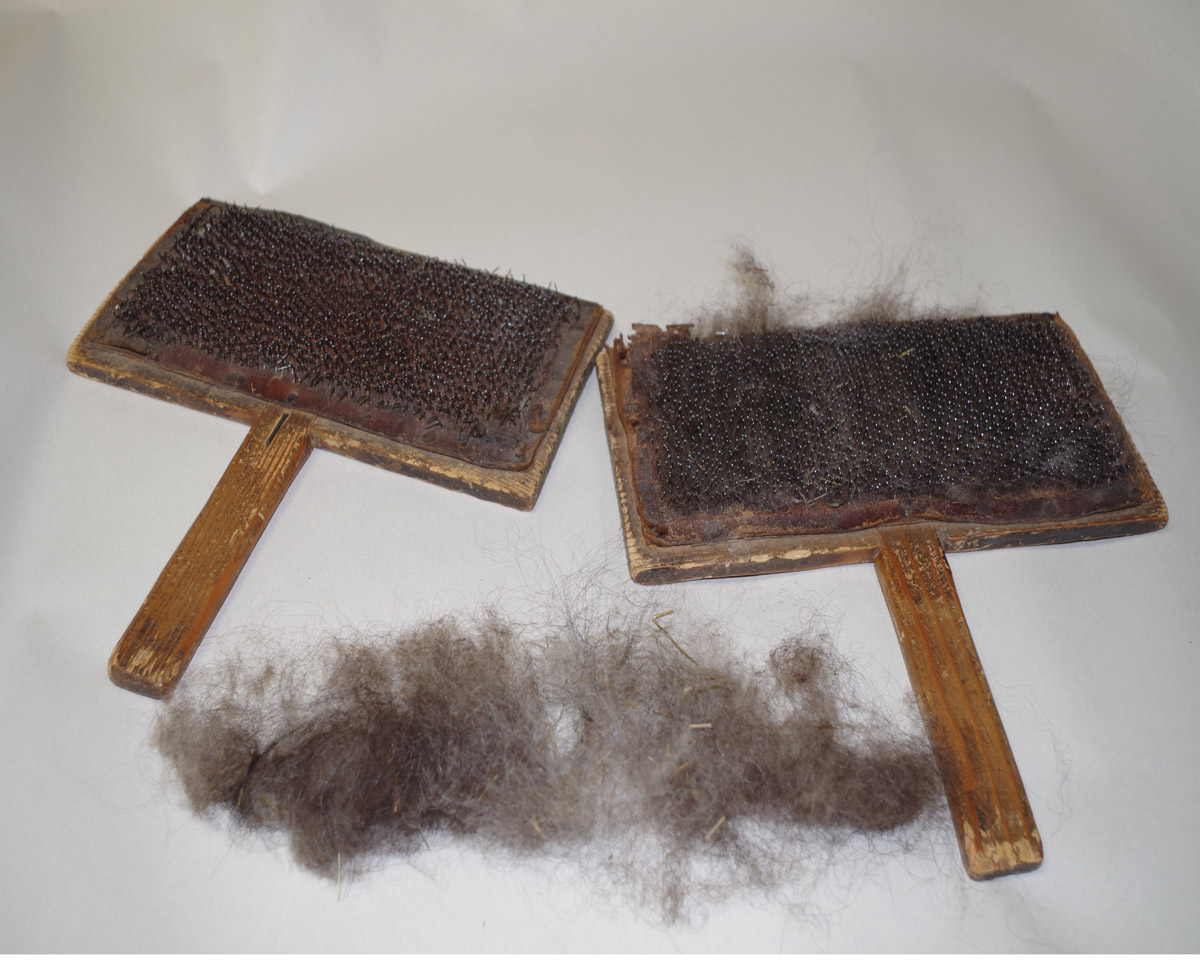Wool Carders
"Grow it, shear it, card it, dye it, spin it, knit it - easy-peasy"Wooden paddle carders to comb sheep's wool into batts before spinning into thread
 wool carders
wool carders
Story
Since being brought over by settlers in the 9th century (800s), sheep have played an important role in Iceland. The isolation of the island has led to Icelandic sheep being one of the oldest and purest breeds in the world. Sheep are an important food source as well as a source of wool for clothing outerwear and quilts.
Just like in their homeland Icelandic immigrants to Manitoba relied on homemade wool products to protect themselves against the cold. Even today Lake Winnipeg fishers use woolen mitts because of their particular suitability to picking fish from nets during the winter fishing season.
The wool carders are two wooden paddles with wire brush inserts on one side used for combing sheep's wool into smaller batts (rectangle mats). The wool could then be used for spinning into thread, felting or sewing into quilts.
Wool carders, spinning wheels and knitting needles were common in every household in the New Iceland settlement area from the time of their arrival in Manitoba until synthetic materials arrived on the scene and are even now still found in use with some households.